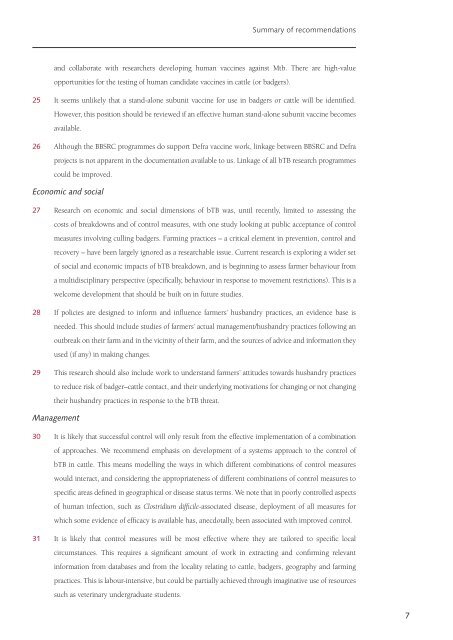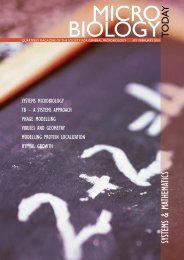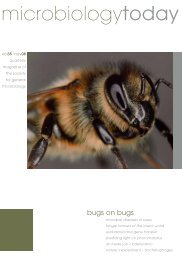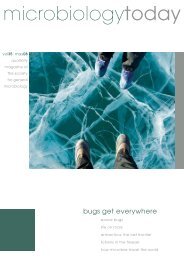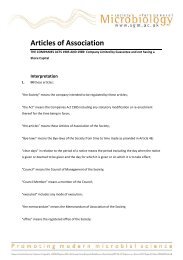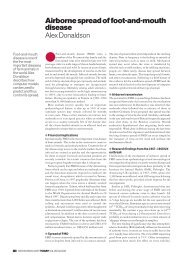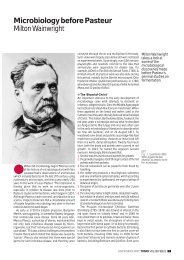final report - ARCHIVE: Defra
final report - ARCHIVE: Defra
final report - ARCHIVE: Defra
Create successful ePaper yourself
Turn your PDF publications into a flip-book with our unique Google optimized e-Paper software.
Summary of recommendations<br />
and collaborate with researchers developing human vaccines against Mtb. There are high-value<br />
opportunities for the testing of human candidate vaccines in cattle (or badgers).<br />
25 It seems unlikely that a stand-alone subunit vaccine for use in badgers or cattle will be identified.<br />
However, this position should be reviewed if an effective human stand-alone subunit vaccine becomes<br />
available.<br />
26 Although the BBSRC programmes do support <strong>Defra</strong> vaccine work, linkage between BBSRC and <strong>Defra</strong><br />
projects is not apparent in the documentation available to us. Linkage of all bTB research programmes<br />
could be improved.<br />
Economic and social<br />
27 Research on economic and social dimensions of bTB was, until recently, limited to assessing the<br />
costs of breakdowns and of control measures, with one study looking at public acceptance of control<br />
measures involving culling badgers. Farming practices – a critical element in prevention, control and<br />
recovery – have been largely ignored as a researchable issue. Current research is exploring a wider set<br />
of social and economic impacts of bTB breakdown, and is beginning to assess farmer behaviour from<br />
a multidisciplinary perspective (specifically, behaviour in response to movement restrictions). This is a<br />
welcome development that should be built on in future studies.<br />
28 If policies are designed to inform and influence farmers’ husbandry practices, an evidence base is<br />
needed. This should include studies of farmers’ actual management/husbandry practices following an<br />
outbreak on their farm and in the vicinity of their farm, and the sources of advice and information they<br />
used (if any) in making changes.<br />
29 This research should also include work to understand farmers’ attitudes towards husbandry practices<br />
to reduce risk of badger–cattle contact, and their underlying motivations for changing or not changing<br />
their husbandry practices in response to the bTB threat.<br />
Management<br />
30 It is likely that successful control will only result from the effective implementation of a combination<br />
of approaches. We recommend emphasis on development of a systems approach to the control of<br />
bTB in cattle. This means modelling the ways in which different combinations of control measures<br />
would interact, and considering the appropriateness of different combinations of control measures to<br />
specific areas defined in geographical or disease status terms. We note that in poorly controlled aspects<br />
of human infection, such as Clostridium difficile-associated disease, deployment of all measures for<br />
which some evidence of efficacy is available has, anecdotally, been associated with improved control.<br />
31 It is likely that control measures will be most effective where they are tailored to specific local<br />
circumstances. This requires a significant amount of work in extracting and confirming relevant<br />
information from databases and from the locality relating to cattle, badgers, geography and farming<br />
practices. This is labour-intensive, but could be partially achieved through imaginative use of resources<br />
such as veterinary undergraduate students.<br />
7


